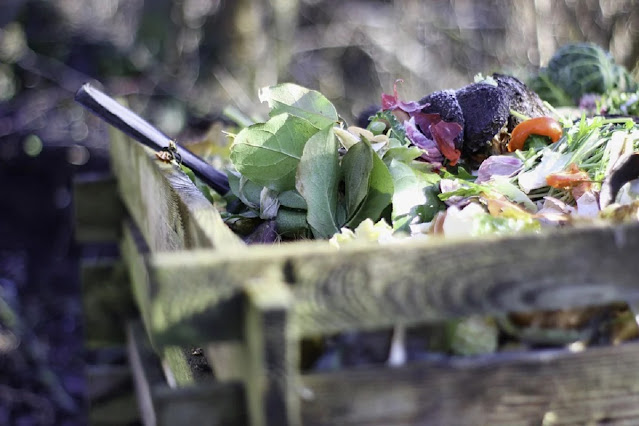Compost Bin For Kitchen
 |
| Source: pixabay.com |
Compost Bin For Kitchen - What is Composting? Before thinking about how to make compost we should first ask what is composting.
Composting is the natural chemical decomposition of plant material to give a rich soil-like material that can be added to the earth in your garden borders or pots to improve its texture and return goodness to the ground.
The alternative of having garden waste carted away for landfill is a waste of a valuable organic natural resource.
Most backyard composting is done by giving the waste garden materials good conditions in which to decompose naturally.
Other processes are also used, such as worm processing in which mainly kitchen waste is eaten and excreted by worms leaving a compost material even more full of soil nutrients than traditional compost.
How to Compost
The most basic type of composting is with a compost pile in a spare corner of the garden. Grass trimmings, shrub prunings, and other dying greenery are heaped together and periodically stirred with a fork to give some aeration. Depending on the climate you can have compost in anything from a few months to a couple of years.
The reason for the differences in time is temperature. Whilst the decomposition reactions produce heat, and the inside of the compost pile can get quite hot, lower ambient temperatures will result in a cooling of the pile and hence a slowing down of the process.
Faster composting can be achieved by using a composter, which can range from a simple stationary plastic tub to an insulated container with a tumbling mechanism to make mixing and aeration easier.
Notes On What To Compost
In the above paragraphs on how to make compost there have been several references to what you can compost. So what can you compost?
Try to keep a balance between the amounts of green and woody material going onto your compost heap. That will give a better texture to the end product. Eggshells from a kitchen compost pail (see below) will also provide calcium and other trace elements.
As we’ve said elsewhere on the site the proportions of brown and green material in a composter are not rigidly fixed. Aim at around fifty-fifty and you’ll not be far out, but don’t worry about being precise.
If you’re a bit short of greenery you might add a composting activator of the type that can be bought at many gardening stores but usually, with a reasonable supply of grass cuttings, you shouldn’t need such additives. In another article, we mention how to compost leaves in the Fall.
Using A Kitchen Compost Bin
Until recent years, even the majority of gardeners do not appear to have realized that although they were recycling their waste plant materials from outdoors they were failing to take advantage of another source of compostable material from indoors.
Kitchen composting is now becoming more popular. At its simplest, it calls for little more than having a kitchen compost pail in which to collect vegetable scraps and then periodically emptying this and stirring it into the outdoor compost pile.
Another approach is to set up a worm composter and feed it with the contents of the kitchen compost bin along with shredded paper and card. People with small patio gardens may find this an adequate source of compost without having a conventional composter
Composting Basics – Be Systematic
Knowing how to make compost is important but there’s also the little question of remembering to do it and not discarding things that could be recycled in this way.
It is a good idea in any garden, but especially in a fairly large one, to think through an orderly composting system.
Being systematic will ensure a good supply of good compost. It will involve less work through having things organized.
If some careful thought is given to the location of a compost pile or composter unit it will be easier to add composting materials as they become available.
How to compost, in the sense of what technology to use, can often be less important than being systematic in what you do.
From Garden to Kitchen and Back
If you grow flowers for cutting and decoration in the home then when they have died down they can return to the ground via the compost pile.
Equally, when you grow vegetables there will be scraps left over both cooked and uncooked that can go into the kitchen compost pail and from there into whatever composting process you use. Fruit and veg can cycle from garden to kitchen and back.
Post a Comment for "Compost Bin For Kitchen"